
COMPLETE NEUROREHABILITATION SOLUTION
recoveriX Neurotechnology is a BCI-based closed-loop stroke rehabilitation system to train upper or lower extremities of patients who suffer from motor impairments due to stroke. It is ready to be used in your hospital or rehabilitation center to treat stroke patients.
recoveriX is the first brain-computer interface rehabilitation system that pairs mental activities (specifically, the imagination of movement) with visual and tactile feedback in real-time. If a subject imagines a joint movement and receives visual feedback through a virtual avatar, and tactile feedback through electrical muscle stimulation at the same time, then this rewarding feedback encourages the patient to imagine the movement correctly.
Beyond facilitating patient compliance, the simultaneous activation of both sensory and motor functions is essential in brain plasticity. That is, if the brain areas that control movements are active at the same time that feedback is provided, the brain areas should recover more effectively. On the other hand, if the patient receives feedback while not imagining hand movement, recovery will be poor.
| Hand therapy mode |
| Foot therapy mode (research mode) |
| Classification accuracy to quantify patient's performance |
| Easy, online EEG quality control |
| Real-time event-related desynchronization maps |
| Real-time functional stimulation of hands and legs |
| Mirror neuron system activation with a virtual avatar |
| Easy to understand instructions for the patient |
| Fully guided therapy runs for 45 minutes |
| CE certified medical product |
| Active EEG electrodes for perfect data quality | 16 |
| Wireless EEG headset resolution | 24 Bit |
| Functional electrical stimulator current | 1-60 mA |
| Battery life EEG headset | >8 hours |
SYSTEM COMPONENTS
recoveriX PRO Neurotechnology comes with a personal computer that controls the components and accessories of the device. The external monitor is placed in front of the patient. The visual feedback shows the patient’s hands in a first-person perspective or feet in a mirror perspective. Two Functional Electrical Stimulators are stimulating the muscles, performing the dorsiflexion of both joints.
Finally, an EEG cap with 16 channels is included and allows a wireless charging and a fast switch from one patient’s cap to the other.
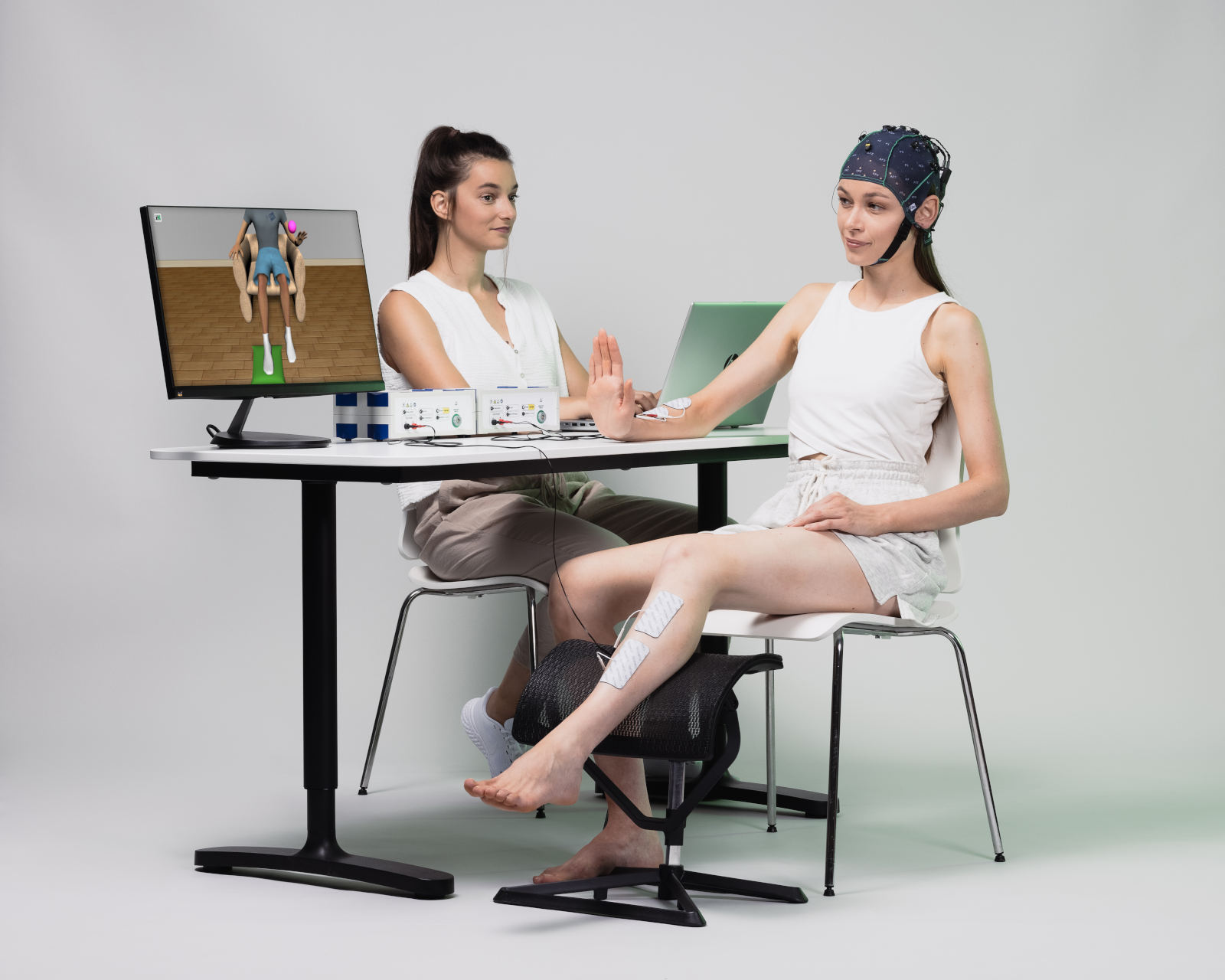
MONITORING PATIENTS' PARTICIPATION
Patients may may misunderstand the instructions to imagine (or try to perform) specific movements while receiving feedback. Patients may be tired, depressed (including post-stroke depression), distracted, or perform compensatory strategies such as imagining the shoulder. If the patient does not imagine the movement, therapy will be less effective, leading to poorer outcomes.
recoveriX PRO gives an real-time feedback showing if the patient is doing every motor imagination correctly. This usually leads to a much higher level of motivation.
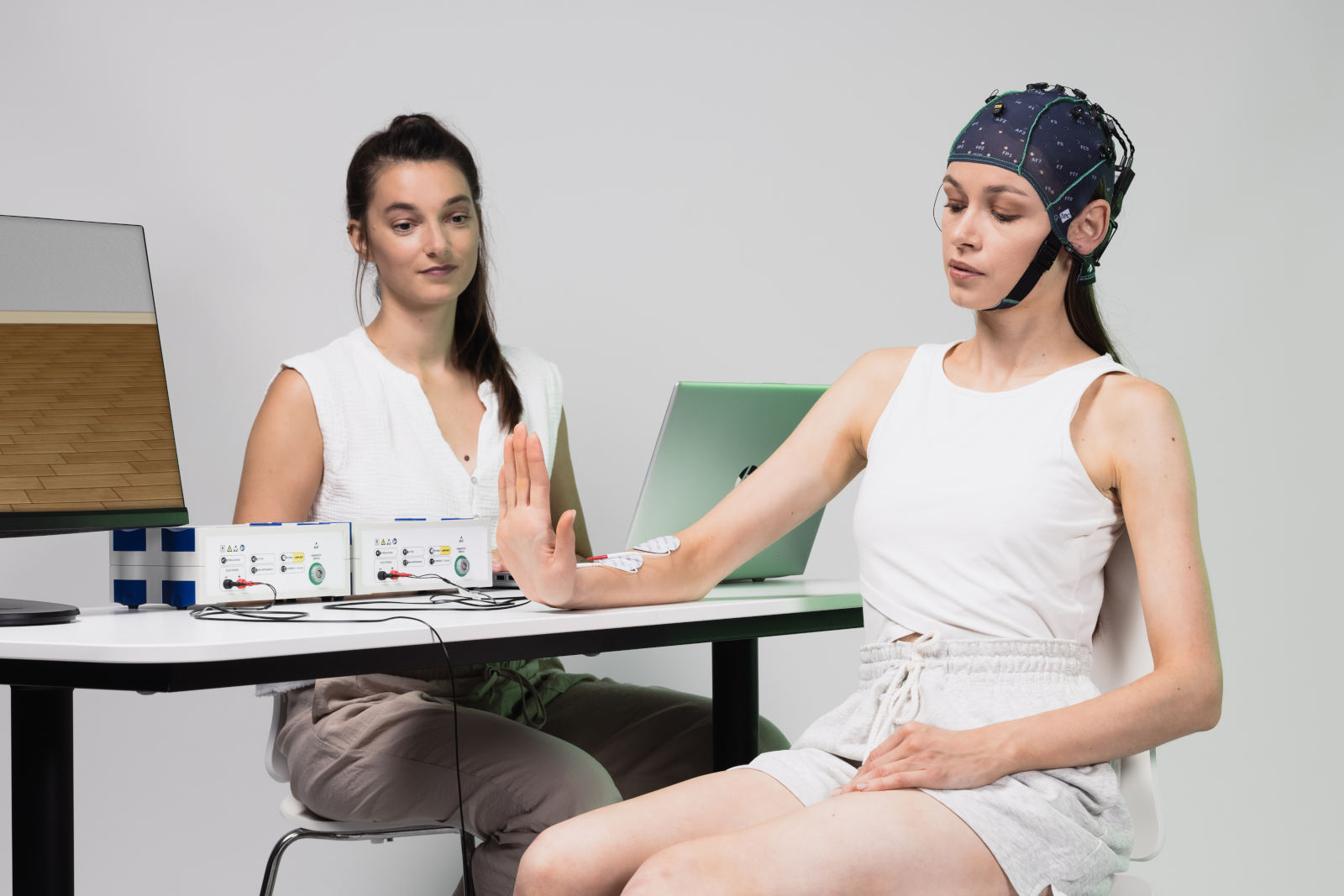
MOTOR IMAGERY WITH REAL-TIME FUNCTIONAL ELECTRICAL STIMULATION
In this video shows how a patient is treated with recoveriX. The avatar on the screen indicates the hand movement that the patient should imagine. Then the BCI system is able to pick up the sensorimotor cortex is activated and it triggers a functional electrical stimulation of the corresponding hand. We are treating both, the left and the right hand to active both hemispheres. In the video you can see that the right hand was affected by the stroke and the index finger shows some spasticity. The left and right movement is produced by the electrical stimulator.
recoveriX combines seven established standard therapies recommended by organizations such as the American Stroke Association and the Canadian Stroke Association for stroke patients. Better yet, recoveriX integrates cognitive tasks with movement exercises, which makes the therapy more successful for multiple sclerosis patients as well as stroke patients.
This unique rehabilitation approach of recoveriX promotes neuroplasticity in the brain, allowing the brain to build new pathways to relearn lost motor functions.
MOTOR IMAGERY
Motor Imagery is a cognitive technique in which a person imagines a hand, foot or other movement without actually becoming physically active. recoveriX ensures that actual movements only take place with the corresponding mental imagery.
VIRTUAL REALITY
In this method, patients have to follow the avatar’s instructions by simply imitating what is visualized and spoken. The recoveriX avatar can perform the movements that the patients imagine to increase motivation.
FUNCTIONAL ELECTRICAL STIMULATION
In FES therapy, electrodes specifically stimulate the dorsiflexors of the forearms or legs. When recoveriX recognizes a correct movement pattern, real-time stimulation of these muscles occurs, resulting in actual hand or foot movements.
MIRROR NEURON THERAPY
In this method, patients have to follow the avatar’s instructions by simply imitating what is visualized and spoken. The recoveriX avatar can perform the movements that the patients imagine to increase motivation.
BILATERAL TRAINING
recoveriX encourages the patient to practice motor imagery of both sides of the body, e.g. the affected right foot or the left hand. This approach is designed to support the
activation of both hemispheres of the brain.
CONSTRAINT-INDUCED MOVEMENT THERAPY
During recoveriX therapy, the healthy limb is constrained to stimulate the impaired limb. Patients must repeatedly imagine the movements of both the healthy and the impaired sides.
TASK-BASED TRAINING
By imagining the movement, the patient controls the avatar and can trigger actual movement through electrostimulation. If performed correctly, the hand or foot is raised and the patient can touch a small virtual ball.
CLINICAL IMPROVEMENT FROM THE MS STUDY
A group study showed that recoveriX was effective for upper and lower limb treatment. Multiple Sclerosis patients improved in standing up and sitting down, balance, walking speed, walking distance, spasticity, MS impact and fatigue. The improvement in fatigue is especially interesting because there is no other treatment available.
CLINICAL IMPROVEMENT IN THE UPPER EXTREMITY AFTER STROKE TREATMENT
The efficacy of recoveriX upper extremity treatment was shown in a group study with chronic stroke patients. Patients could move their upper extremities better after treatment. The improvement depended on the stroke severity but was always above the clinically important difference. The recoveriX therapy works even 10, 20 or 30 years after the stroke.
CLINICAL IMPROVEMENT IN THE LOWER EXTREMITY AFTER STROKE TREATMENT
The efficacy of recoveriX lower extremity treatment was shown in a group study with chronic stroke patients. recoveriX patients improved their walking speed on average by 0.19 m/s. The best other treatment option (electromechanical gait training with end effector training) led to 0.11 m/s improvement. Importantly, recoveriX is easier to use and does not need a body weight support system because patients are seated during the recoveriX therapy.
MORE RESULTS FROM THE STUDY…
The clinical effectiveness was shown in a group study with 52 patients who improved in motor functions and spasticity highly significant.
The recoveriX PRO study investigated 52 patients (3.3 years after stroke) with a mean FMA-UE (Fugl-Meyer Assessment of Upper Extremities) at baseline of 17.0 points. The study showed a signifanct improvement of FMA-UE of 4.76*** points.
Severly impaired patients (FMA-UE: 0-28) improved 3.8*** points, moderatley impaired patients (FMA-UE: 29-42) improved 7.99*** points, mildly impaired patients (FMA-UE: 43-66) improved 5.29*** points. People that achieved an average classification accuracy >80 % improved by 6.5 points, people that were below 80 % had an improvement of 2.3 points.
The following tests showed additionally a significant improvement: Bartel**, Modified Ashworth Scale Wrist***, Modified Ashworth Scale Fingers***, Box and Block Test of Affected Hand**, Box and Block Test of Healthy Hand***, 9-hole PEG Test of Affected Hand*, 9-hole PEG Test of Healthy Hand***, Fahn Tremor Rating Scale of Affected Hand**, Fahn Tremor Rating Scale of Healthy Hand**, Lower Extremity Fugl Meyer Assessment*, Montreal Cognitive Assessment*, Stroop Color-Word Test**.
Other control studies got on average an improvement of 3.92 points in FMA-UE (FES, robotic movement, visual feedback). *** <0.001, ** <0.01
Stephen et al. (2012) defined the clinically important difference (CID) for moderately to minimally impaired patients in chronic stroke. This CID refers to the UE-FM improvement and is 4.25 to 7.25 points. recoveriX achieved for moderately impaired patients 7.99 points which is higher than the CID. For minimally impared patients, recoveriX achieved 5.29 points which is in the range of the CID. Furthermore, the study showed that recoveriX leads to the same improvement independent of how long ago the stroke happened (Range: 6 month to 31 years).
PRIVATE REHAB PRACTICE
recoveriX can be added into your neurological rehabilitation practice which gives you a competitive advantage. Think about the statistical number of stroke patients in your region and you’ll get a rough idea of how many potential patients you can treat with recoveriX.
By servicing a complete region, you create a unique selling proposition because there is no treatment comparable to recoveriX. The more recoveriX systems you have, the more patients you can treat simultaneously.
HOSPITAL OR REHABILITATION CENTER
When patients suffer a stroke or other neurological injury, they are hospitalized. In this acute phase, rehabilitation is most relevant and determine success of the mostly long-lasting recovery process. recoveriX is easy to use and mobile and can be used already with hospitalized patients at bedside.
Afterwards, recoveriX can be used in the rehabilitation center in the sub-acute phase. recoveriX trains the brain and therefore supplements standard physical therapy in the subacute phase.
FREQUENTLY ASKED QUESTIONS
A significant disorder in language, cognition, and/or attention (such as Wernicke’s aphasia or dementia), which prevents the patient from understanding the tasks and/or performing these tasks, is an exclusion criterion.
The recoveriX treatment can also be used for patients with epilepsy, but the final decision is done by your family doctor.
Patients do not need a separate therapy session for the instruction – they can start with the therapy immediately. The patients only need to learn the general procedure and simple instructions for the therapy session before the first session. The first session is already part of the therapy.
recoveriX provides functional muscle stimulation of the left and right arm to perform a dorsiflexion and of the left or right foot. This improves lower and upper limb functions.
Yes. Actually, recoveriX combines 3 standard therapies into one treatment: (i) functional electrical stimulation, (ii) motor imagery and (iii) mirror neuron therapy. Additional physical therapy can be beneficial for the patient.
recoveriX can be used for stroke rehabilitation across the acute, sub-acute, and chronic stages, as various patient cases have shown. Our scientific study has shown that recoverX therapy is effective even 10, 20, 30,… years after the stroke or neurological disorder occured.
It is recommended to perform recoveriX therapy for a complete course of 25 therapy sessions, with 3 sessions per week, each lasting for about 1 hour. Of course, it is also possible to participate in other therapies or rehabilitation programs. We know that patients are likely to improve more, the more therapy he/she gets.
Yes, the improvements are long-lasting and remain permanently.
One recoveriX block contains 25 therapies. 3 therapy sessions per week are recommended. Patients can have up to 2 treatments per day. This is especially useful to reduce exhausting travel time.
recoveriX is a rehabilitation system specifically developed for patients with neurological deficits. Patients who had a stroke, a traumatic brain injury or another brain injury can do the therpay. Furthermore, patients with hemiplegia, movement impairments resulting from brain damage, pain, spasticity or Multiple Sklerosis can benefit from the therapy.
BUY YOURS

Choose System
Choose Quantity

Select Accessories
START RECOVERIX TRAINING WITH YOUR PATIENTS
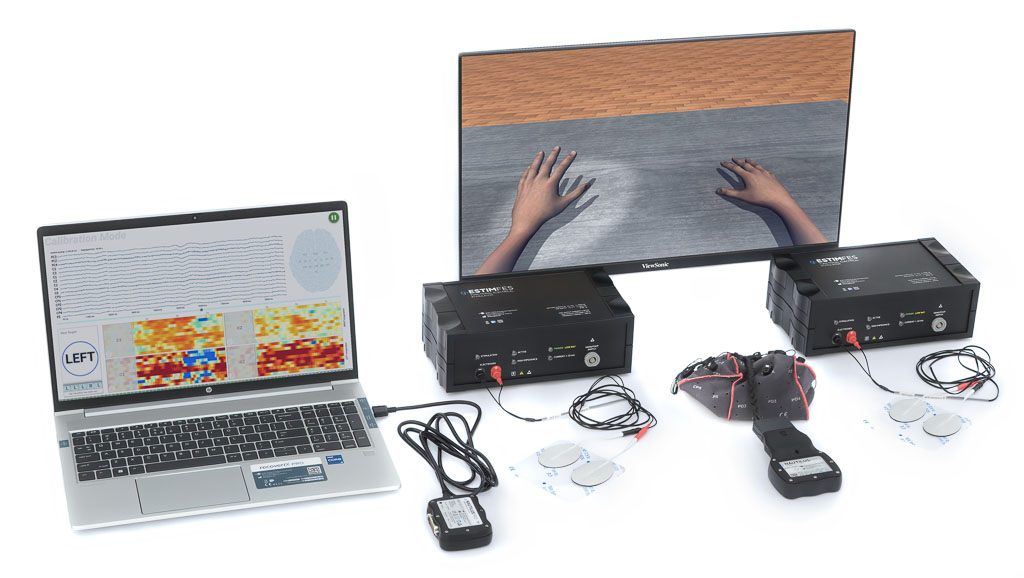
NEED MORE INFORMATION
ABOUT THIS PRODUCT?
Send us your email so we can contact you as soon as possible.

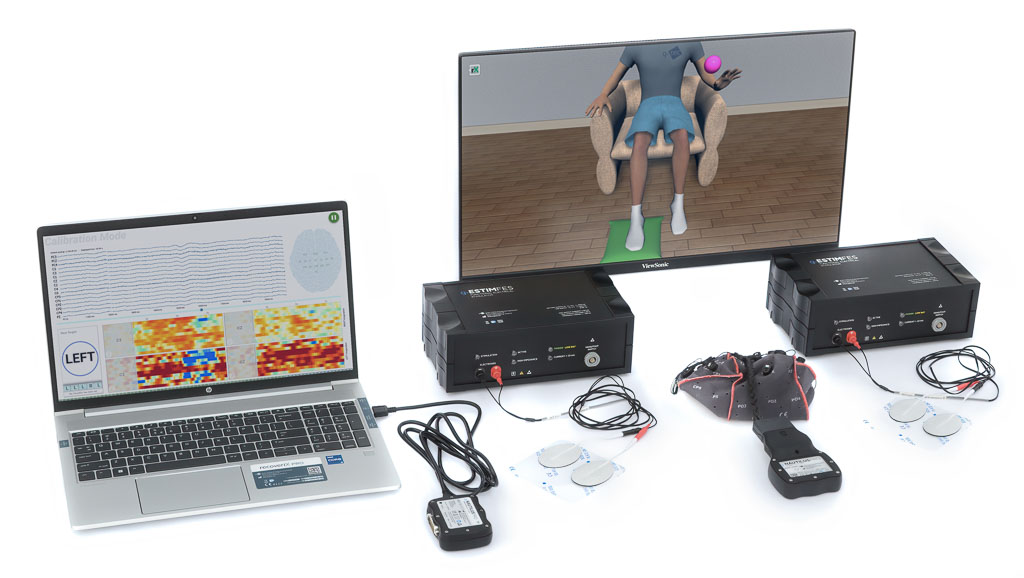
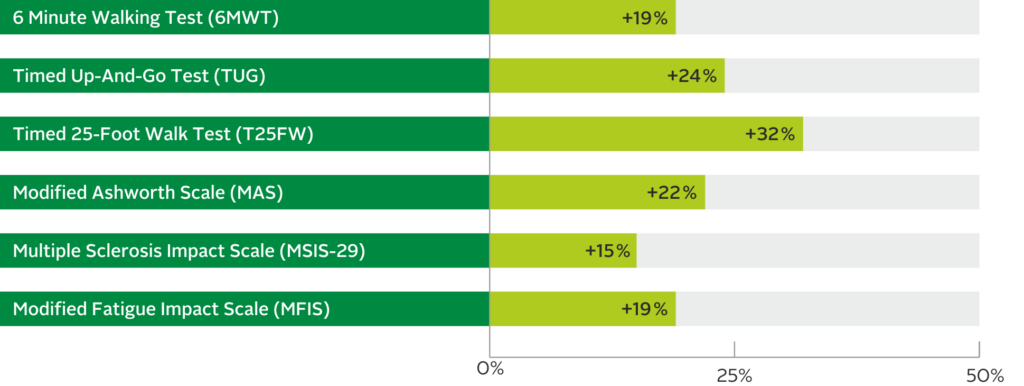


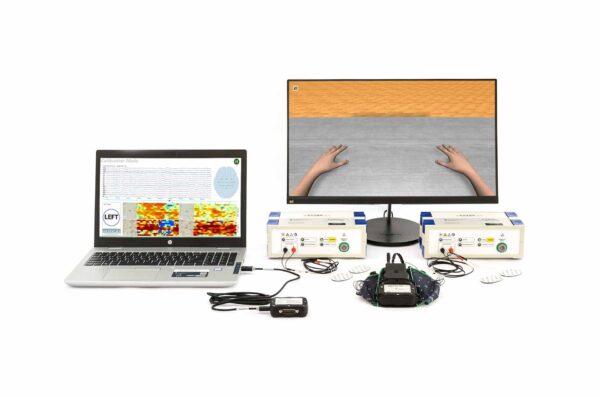
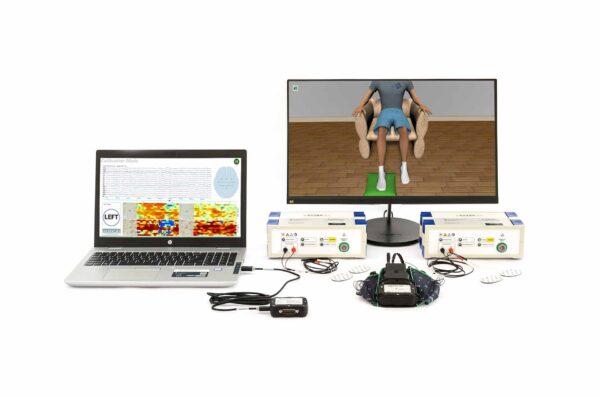
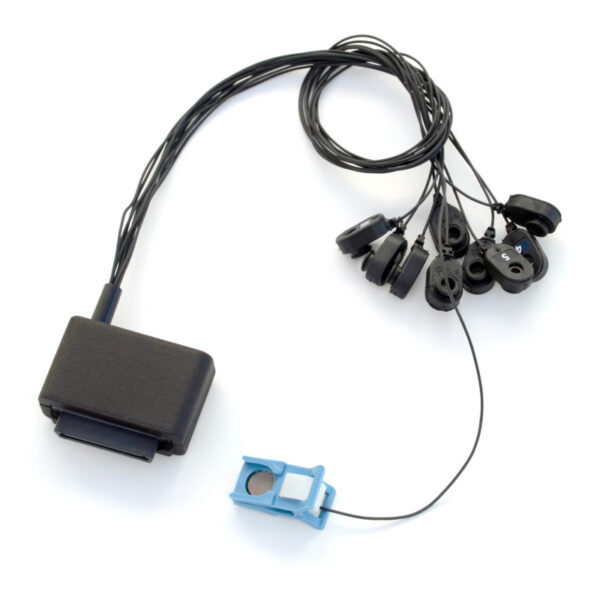
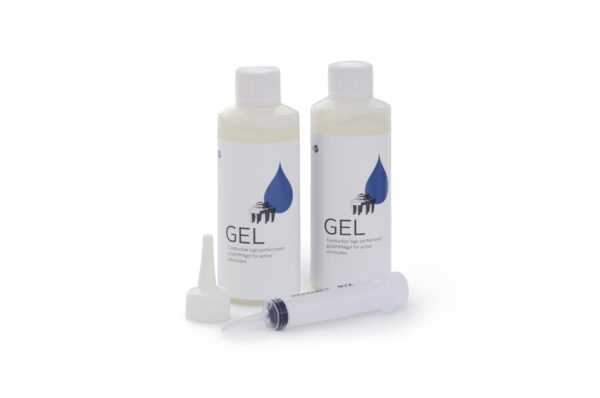


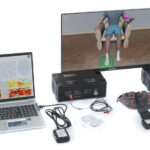 recoveriX
recoveriX 





